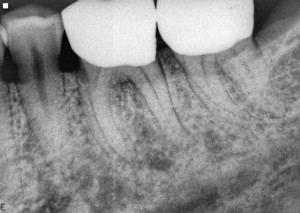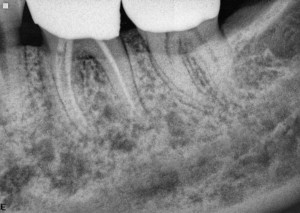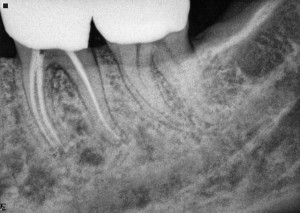The level of preoperative pain is the best predictor of the level of postoperative pain. Nonsurgically, we are able to treat the pulpal condition and we often catch patients in a periapical state that is degenerating rapidly. In my clinical experience even though the pulpal degeneration was the trigger for the periapical pathology and has been treated, for a brief period after nonsurgical treatment the periapical nightmare continues unabated. As long as the original stimulus has been addressed, in time the tissue pressure decreases and the inflammation subsides.
I often see this situation in teeth that present with severe heat sensitivity. As the situation approaches the boiling point, the intersection of inflammation, tissue pressure, occlusal stress and bacterial invasion creates a perfect storm. Many of these patients have what I call “The locomotive effect.”
Have you ever ridden a bicycle? Driven a car? If so, then you know that no matter how fast you are going, you can apply the brake and you will come to a complete stop. On a ten speed bike, that may take ten or twenty feet. In a car, a longer distance. How about a locomotive? Due to the mass of the locomotive, it takes a much longer distance to stop, sometimes a mile or more. In the same way, the patient with escalating periapical discomfort has a periapical condition that will not likely be stopped immediately. Sometimes the discomfort resolves immediately but most of the time, it takes awhile to resolve completely. Occlusal adjustment is usually required perioperatively, and the patient needs to be prepared for the need for analgesics, palliative therapy such as application of ice or heat, and the possible need for antibiotics. It is not uncommon for these patients to be seen on one day, and require antibiotic therapy shortly thereafter for swelling that was not present at the operative appointment.
The case below is a perfect example. At the time of the first visit, this tooth was angry, and the periapical status was degenerating rapidly. Diagnosis #19: Symptomatic Irreversible Pulpitis, Symptomatic Apical Periodontitis.
After complete instrumentation and placement of Calcium hydroxide this tooth was still symptomatic to percussion and a sense of tenderness was notable. Without analgesics it was barely tolerable, and this state persisted for a couple of weeks.
However, by the time of the complete visit 5 weeks later, the tooth was asymptomatic and the case was completed.
Periapical healing takes time. Pulpal symptoms(spontaneous pain, thermal sensitivity)should resolve immediately, but the periapical component of discomfort can take awhile to resolve completely. Failure to recognize this common pattern can lead the practitioner to believe that treatment is unsuccessful, when in reality, it is par for the proverbial course.
I have found it helpful to:
1. Educate the patient on what to expect.
2. Stress the importance of compliance taking analgesics.
3. Adjust the occlusion prior to dismissal.
4. Provide antibiotic therapy when warranted.
5. Encourage palliative measures
6. Remain in contact with patients via phone or follow up visits to assess their condition, monitor their condition and provide reassurance.


